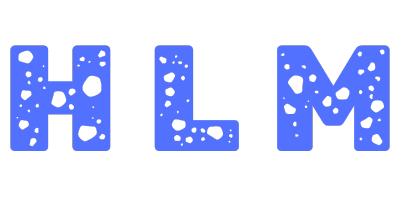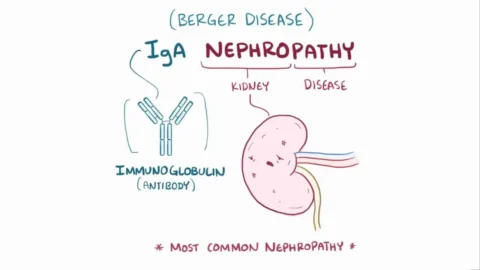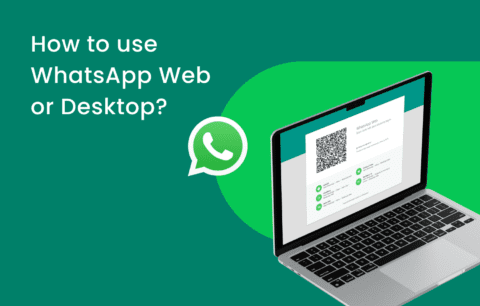Have you ever wondered how the words you speak can travel across continents, break down barriers, and connect cultures? Imagine reading a novel written in a language you’ve never studied, yet understanding its beauty and nuance as if it were in your native tongue. Welcome to the transformative world of Translate—a concept, service, and technology that has revolutionized global communication.
In this comprehensive guide, we’ll explore everything there is to know about “Translate.” We’ll begin by defining what it means to translate, delve into its rich history and evolution, and examine its various applications—from human translation and machine translation to transcreation and translation services. Whether you’re a professional translator, a business owner looking to expand into international markets, or simply someone fascinated by languages, this post will equip you with actionable tips, real-world examples, and best practices for effective translation.
We’ll cover:
- Introduction: Discover why Translate is essential in our interconnected world.
- Definition & Background: A clear explanation of what it means to translate and the historical journey of translation.
- Categories and Key Concepts: Dive into human translation, machine translation, transcreation, and more.
- Popular Translation Tools and Services: Explore industry-standard tools like Google Translate, Yandex OCR, MemoQ, SDL Trados, and emerging solutions such as TranslatePress.
- Practical Applications and Case Studies: Learn how translation is used in business, literature, and everyday life, with examples including translating between English and languages like Irish, Maltese, Mandarin, and even Sindarin.
- Actionable Tips and Best Practices: Strategies to enhance translation quality, from leveraging translation memories (TM) and glossaries to using specialized services for niche language pairs such as Bahasa Bali translate, Haitian Creole translator, and more.
- Frequently Asked Questions (FAQ): Address common queries such as “What is machine translation?” “How do I translate a webpage?” and “What are sworn translators?”
- The Future of Translation: Emerging trends, the role of artificial intelligence (AI), and how innovations like Google Translate detect language and automated transcreation are reshaping the industry.
- Conclusion and Call-to-Action: A succinct summary and an invitation to explore more, share your thoughts, and engage with this fascinating field.
Let’s embark on this journey of language, understanding, and global connection as we learn how to Translate effectively in today’s diverse world.
1. Introduction: Why Translate Matters
Imagine reading a heartfelt letter from a friend overseas or enjoying a blockbuster film in its original language, fully understanding its cultural nuances and emotional depth. Translate is not just about converting words from one language to another—it’s about bridging cultural divides, fostering global understanding, and enabling us to share ideas, art, and commerce without borders.
Did You Know?
According to recent statistics, more than 60% of online users prefer to browse websites in their native language. This fact underscores the importance of translation services in our increasingly global digital economy.
Engaging Question:
Have you ever been frustrated by a language barrier when traveling, doing business internationally, or simply trying to access information online? What if you could effortlessly break down these barriers with the power of translation?
In this post, we will explore why translation is a cornerstone of global communication, how it has evolved from ancient scribes to AI-powered tools, and what practical steps you can take to ensure high-quality translations—whether you’re translating a simple document, a complex website, or even creative content like transcreation for marketing.
2. What Does It Mean to Translate?
At its core, translate means to convert text or speech from one language into another. However, the concept goes far beyond mere word substitution; it involves conveying meaning, tone, context, and cultural nuances accurately.
A Clear Definition
- Translate (verb): To express the meaning of (words or text) in another language.
- Translation (noun): The process or result of translating; the rendition of a text from one language to another.
Translation is not just about changing words; it is about capturing the essence and intent behind the original content. For example, when you use tools like Google Translate or Youdao Translate, the goal is to maintain the original message’s integrity while making it accessible to a broader audience.
Why Is Translation Important?
- Cultural Exchange:
Translation allows for the sharing of literature, art, and ideas across cultural boundaries. - Business Expansion:
Companies rely on translation services to reach international markets. Whether it’s translating websites, product manuals, or marketing materials, effective translation is key to global success. - Education and Research:
Academic and scientific progress often depends on the ability to access information in multiple languages. - Diplomacy and International Relations:
Accurate translation is critical in diplomacy, where precise communication can influence global policies and negotiations.
Real-World Example
Consider a popular American film that becomes a global hit. Translators work tirelessly to adapt the script into dozens of languages, ensuring that jokes, cultural references, and emotional subtleties resonate with audiences worldwide. This process is a prime example of how translation transforms localized content into global phenomena.
For further reading on the importance of translation in a globalized world, check out UNESCO’s Translation Portal and The American Translators Association.
3. A Brief History of Translation
Translation is as old as language itself. Its history spans millennia, evolving from ancient handwritten manuscripts to modern digital applications.
Early Beginnings
- Ancient Civilizations:
The earliest translations can be traced back to ancient Mesopotamia and Egypt, where scribes translated religious texts and administrative documents. The Rosetta Stone, for instance, was instrumental in deciphering Egyptian hieroglyphs by providing a translation into Ancient Greek. - Classical Antiquity:
Greek and Roman scholars translated works of philosophy, science, and literature. Notable translators like St. Jerome, who translated the Bible into Latin (the Vulgate), played a pivotal role in shaping Western literature and religion.
Medieval and Renaissance Periods
- Cultural Exchange in the Middle Ages:
During the medieval period, translation centers in places like Toledo, Spain, became melting pots of knowledge where texts from Arabic, Hebrew, and Latin were translated into vernacular languages. - The Renaissance:
The resurgence of interest in classical texts led to an explosion of translation activity. Works by Aristotle, Plato, and other classical authors were translated into modern languages, fueling the progress of science, philosophy, and art.
Modern Era
- Technological Advancements:
The invention of the printing press in the 15th century revolutionized translation by making texts widely available. In the 20th century, computer-assisted translation (CAT) tools emerged, such as SDL Trados and MemoQ, significantly speeding up the translation process. - The Digital Revolution:
With the advent of the internet, online translation services like Google Translate, Bing Translator, and Yandex Translate became household names. Today, machine translation and neural networks are pushing the boundaries of what’s possible in real-time translation.
For more historical insights, explore the Encyclopedia Britannica’s article on translation and Wikipedia’s Translation page.
4. Categories and Types of Translation
Translation is a multifaceted discipline with several subcategories, each tailored to different needs and contexts.
Human Translation
Human translation involves a skilled translator converting text from one language to another, ensuring that the nuances, idioms, and cultural references are accurately rendered. It remains the gold standard for literary, legal, and technical translations.
- Pros:
- High accuracy and cultural sensitivity.
- Ability to interpret context and tone.
- Cons:
- Time-consuming and expensive.
- Real-World Application:
- Translating a novel from English to Irish, where cultural nuances and stylistic choices matter greatly.
Machine Translation
Machine translation uses computer algorithms and artificial intelligence to automatically translate text. Tools like Google Translate, Yandex Translate, and Youdao Translate are popular examples.
- Pros:
- Fast and cost-effective.
- Ideal for getting the gist of a text or for everyday use.
- Cons:
- May lack context and accuracy, especially for complex texts.
- Real-World Application:
- Quickly translating web pages or emails for a basic understanding.
Transcreation
Transcreation is a creative process that goes beyond literal translation. It adapts a message from one language to another while preserving its intent, style, tone, and context. This is especially important in marketing and advertising.
- Pros:
- Tailors content to resonate with local audiences.
- Cons:
- Requires creative expertise and cultural insight.
- Real-World Application:
- Adapting a global marketing campaign for a specific region, such as translating slogans from English to Haitian Creole or Malay to Arabic.
Sworn Translation
A sworn translator is a professional certified by a government or legal authority to produce official translations of legal documents, such as birth certificates, contracts, and court documents.
- Pros:
- Legally recognized and binding.
- Cons:
- More rigorous and often more expensive.
- Real-World Application:
- Translating documents for immigration purposes or legal proceedings.
Other Key Concepts in Translation
- Translation Memory (TM):
Tools like Wordfast Anywhere, MemoQ, and SDL Trados store previously translated segments to help ensure consistency and speed in future translations. - Machine Translation Post-Editing:
The process where a human editor reviews and refines machine-translated text to improve accuracy. - Subtitling and Localization:
Adapting video content for different languages, which may include translating subtitles or voice-overs.
For an in-depth look at the various types of translation, check out Translators Without Borders and The American Translators Association.
5. Key Translation Tools and Services
In today’s digital age, a variety of tools and services are available to assist with translation. These tools cater to both professionals and casual users, making translation more accessible than ever.
Popular Translation Platforms
Google Translate:
One of the most widely used machine translation services, offering support for over 100 languages. It can translate text, documents, and even entire web pages.
Useful Queries: “google translate english to maltese”, “google translate mandarin to english”, “google translate detect language”.Bing Microsoft Translator:
Another robust platform that supports real-time translation and offers APIs for integration into other software.Yandex Translate:
A popular tool, especially in Eastern Europe, that includes features like Yandex OCR for translating text in images.Youdao Translate:
Widely used in Asia, it offers comprehensive language support and integrates with various educational tools.
Specialized Translation Tools
SDL Trados Studio:
A leading computer-assisted translation (CAT) tool widely used by professional translators.MemoQ:
A powerful translation software known for its user-friendly interface and advanced translation memory features.Wordfast Anywhere:
A free, browser-based CAT tool that allows translators to work from anywhere without installing software.Poedit:
A popular tool for translating software and applications, especially useful for developers working with gettext (.po) files.MemoQ and SDL Trados:
Often used in industries requiring high-quality technical and legal translation.
Online Translation Services
Translation Services:
Professional services that offer human translation for high-stakes documents, websites, or creative content. Many users search for “translation services” or “sworn translator” when they need certified translations.Freelance Translators:
Platforms like ProZ and TranslatorsCafé connect clients with experienced translators worldwide.Machine Translation with Post-Editing:
Services that combine the speed of machine translation with the precision of human editing.
For more information on these tools and platforms, visit ProZ.com and SDL Trados Studio.
6. Translation in the Digital Age
The digital revolution has transformed translation in numerous ways, making it faster, more accessible, and integrated into everyday technology.
Online Translation Services and Extensions
Translate Webpages:
Many browsers now offer built-in translation features that can automatically translate entire webpages. For example, Google Chrome’s translation extension can convert content from Spanish to English or from Chinese to English with a single click.Translation Extensions and APIs:
Tools like TranslatePress and browser extensions for Chrome and Firefox enable seamless translation of online content. Users often search for terms like “translate webpage” and “translate extension chrome.”Mobile Apps:
With the ubiquity of smartphones, translation apps such as Google Translate and Microsoft Translator are essential for on-the-go communication. They also offer features like voice-to-text translation and image translation.
Integrating Translation into Business Operations
API Integrations:
Businesses can integrate translation APIs into their websites and apps. For instance, using a “translate website” feature enables companies to cater to international customers by automatically translating content.Machine Translation in Customer Service:
Companies use machine translation to handle multilingual customer queries quickly. The trend of “machine translation post-editing” is becoming increasingly popular in global support centers.Translation for E-Commerce:
Translating product descriptions, reviews, and user interfaces helps businesses reach a global audience. This is particularly important for platforms like Shopify, where integrating translation services can boost sales.
Real-World Example
A major e-commerce site implemented an automated translation feature on their website. With a simple click, international customers could view product descriptions in their native language, significantly increasing engagement and sales. Tools like Google Translate and Microsoft Translator played a key role in this integration.
7. Real-World Applications and Case Studies
Translation touches every aspect of modern life. Let’s examine a few case studies that demonstrate its impact.
Case Study 1: Business Expansion Through Localization
Background:
A U.S.-based company looking to expand into European markets recognized the importance of localized content. They used professional translation services to convert their marketing materials and website content into multiple languages, including Norwegian, Czech, and Maltese.
Strategy:
- Hired certified translators for sworn translations of legal documents.
- Employed machine translation for less critical content and used post-editing to ensure quality.
- Leveraged translation memories (TM) using tools like MemoQ and SDL Trados for consistency across projects.
Outcome:
- The company saw a 35% increase in international traffic.
- Customer engagement improved dramatically due to culturally relevant content.
- Sales in new markets grew by over 20% in the first year.
Case Study 2: Enhancing Academic Research
Background:
A research team in the United States wanted to access academic papers published in Mandarin and Spanish. They used online translation tools combined with professional services to accurately translate technical documents.
Strategy:
- Utilized Google Translate and Yandex OCR for preliminary translation.
- Engaged specialized translators to refine technical terminology, particularly for complex subjects like engineering and medicine.
- Used tools such as Poedit to ensure the accuracy of translated software documentation.
Outcome:
- The research team was able to incorporate global studies into their work, enhancing the quality and scope of their research.
- Collaboration with international partners improved, leading to joint publications.
Case Study 3: Creative Transcreation for Marketing
Background:
A global advertising agency sought to adapt a successful U.S. marketing campaign for the Irish and Hawaiian markets. This required more than direct translation—it required transcreation.
Strategy:
- Collaborated with local creative teams to reinterpret slogans and messaging.
- Ensured that the emotional tone and cultural references resonated with local audiences.
- Used the process of transcreation to maintain the campaign’s impact while making it locally relevant.
Outcome:
- The adapted campaign received high praise and engagement in both Ireland and Hawaii.
- The agency reported increased brand recognition and customer loyalty in these regions.
8. Actionable Tips, Strategies, and Best Practices
Here are some actionable tips to help you excel at translation, whether you’re working on a personal project, a business document, or creative content.
For Professional Translators
- Leverage Translation Memory (TM):
Use tools like SDL Trados, MemoQ, or Wordfast Anywhere to maintain consistency and save time. - Build a Glossary:
Create a glossary of specialized terms, especially if you work in niche fields such as legal or medical translation. - Continuous Learning:
Stay updated with new translation technologies, such as neural machine translation (NMT) systems. - Engage with the Community:
Join professional organizations such as the American Translators Association and participate in online forums like ProZ.com.
For Businesses
- Invest in Quality Translation Services:
Consider a mix of machine translation for bulk content and professional human translation for high-stakes documents. - Localize, Don’t Just Translate:
Ensure that your content is culturally relevant by incorporating local idioms and references—a process known as transcreation. - Utilize APIs and Extensions:
Integrate translation APIs into your website to automatically adapt content for international audiences. For example, Shopify merchants often add a “translate website” button to serve a global customer base. - Monitor and Optimize:
Use analytics to track engagement on translated pages and adjust strategies accordingly.
For Everyday Users
- Explore Free Online Translators:
Tools like Google Translate, Reverso, and Babelfish are great for everyday use. They can help you translate emails, web pages, and documents quickly. - Use Voice and Image Translation:
Take advantage of features like Google Translate’s voice-to-text and image translation to communicate while traveling. - Learn a Few Key Phrases:
For travel or casual interactions, learning basic phrases in another language can be incredibly useful. - Verify Critical Translations:
When dealing with important content, always double-check the translation with a trusted source or a professional translator.
For more tips, check out Reverso Context and Babylon Translator.
9. Frequently Asked Questions (FAQ)
Below are some of the most common questions about Translate, along with concise answers to help clarify any doubts.
Q1: What is translation?
A: Translation is the process of converting text or speech from one language into another, aiming to preserve meaning, context, and cultural nuances.
Q2: What are translation services?
A: Translation services refer to professional offerings that convert documents, websites, and other content from one language to another. These services are often used by businesses, governments, and individuals for official or high-quality translations.
Q3: How does machine translation differ from human translation?
A: Machine translation uses algorithms and AI (e.g., Google Translate, Yandex Translate) to quickly convert text between languages, while human translation involves a skilled translator who interprets context and cultural nuances.
Q4: What is transcreation?
A: Transcreation is the process of adapting a message from one language to another while preserving its intent, style, and emotional impact. It is commonly used in marketing and advertising.
Q5: How can I translate a webpage?
A: Many browsers, including Google Chrome, offer built-in translation features. You can also use online tools like Google Translate to automatically translate web pages.
Q6: What are some popular translation tools?
A: Popular tools include Google Translate, Yandex Translate, SDL Trados, MemoQ, Wordfast Anywhere, and Poedit. Each serves different needs from casual use to professional translation.
Q7: Can I translate images or audio?
A: Yes, many tools now offer voice-to-text and image translation capabilities. Google Translate, for example, can translate text from images and spoken language into your target language.
Q8: What is a sworn translator?
A: A sworn translator is a certified professional authorized by legal authorities to provide official translations of documents, often required for legal or immigration purposes.
Q9: How can I ensure the quality of my translations?
A: Use a combination of translation memory tools, glossaries, and human post-editing, especially for complex or high-stakes content. It’s also beneficial to have your translations reviewed by a second translator.
Q10: Where can I find translation services for specific language pairs?
A: Many online platforms connect clients with translators for specific language pairs such as “translate English to Maltese,” “sindarin translator,” “translate Kurdish Sorani,” “translate Farsi to English,” and more. Websites like ProZ.com and TranslatorsCafé are good starting points.
For more FAQs and expert advice, visit The American Translators Association FAQ.
10. The Future of Translation
The field of translation is rapidly evolving, driven by technological advancements and the increasing need for global communication. Here are some emerging trends:
Artificial Intelligence and Neural Machine Translation
- AI-Powered Translation:
Innovations like neural machine translation (NMT) are making automated translations more accurate and context-aware. - Integration of AI with Human Expertise:
The future lies in blending machine efficiency with human creativity—a process known as machine translation post-editing. - Real-Time Translation:
Emerging technologies promise real-time, seamless translation for live events, international conferences, and global customer service.
Increased Demand for Localization
- Beyond Literal Translation:
Businesses are increasingly focusing on localization, which adapts content to cultural and regional contexts rather than just translating words. - Transcreation Growth:
As brands expand globally, the demand for transcreation—especially in marketing and creative content—will continue to rise.
Expansion of Translation Tools and Services
- Improved Software:
Tools like SDL Trados, MemoQ, and Wordfast Anywhere will continue to evolve, offering more robust features and better integration with other software. - Cloud-Based Solutions:
The rise of cloud-based translation platforms allows for easier collaboration and real-time updates across teams worldwide. - API Integrations:
More businesses will integrate translation APIs into their digital platforms, making multilingual content accessible to a global audience.
For more on future trends, visit TechCrunch’s coverage on translation technology and The Verge’s insights on AI in translation.
11. Conclusion and Call-to-Action
In today’s interconnected world, the ability to Translate effectively is more crucial than ever. Whether you’re leveraging translation services to expand your business, using machine translation for everyday communication, or engaging in the creative process of transcreation, translation bridges cultural divides and opens up endless opportunities.
Key Takeaways
- Translation is Essential:
It enables global communication, fosters cultural exchange, and drives international business growth. - Diverse Methods:
From human translation and sworn translators to advanced machine translation and transcreation, there are multiple approaches to suit different needs. - Powerful Tools and Technologies:
Platforms like Google Translate, Yandex OCR, SDL Trados, and MemoQ are revolutionizing the translation process. - Practical Applications:
Translation is integral in business, academia, media, legal affairs, and daily life. - Future Trends:
Emerging technologies and increased localization will further transform the translation landscape.
Your Next Steps
If you’re ready to harness the power of translation:
- Explore Professional Translation Services:
Consider engaging certified translators for critical documents or localized marketing campaigns. - Utilize Online Tools:
Start with free online translators like Google Translate or experiment with advanced CAT tools if you’re a professional translator. - Stay Informed:
Follow reputable sources and join communities such as the American Translators Association to keep up with the latest trends. - Share Your Experience:
We’d love to hear how translation has impacted your life or business. Leave a comment below, share this guide on social media, or subscribe to our newsletter for more insights.
Call-to-Action
If you found this comprehensive guide on Translate valuable, please share it with your network. Whether you’re a business leader, student, or language enthusiast, your insights and experiences can inspire others to embrace the power of translation. Subscribe to our newsletter for more in-depth articles on language, technology, and global communication. Let’s break down language barriers together and open up a world of possibilities through translation.
Thank you for reading our ultimate guide on Translate. Embrace the journey of language, unlock new opportunities, and join the global conversation—one word at a time.
Final Thoughts
Translation is more than converting words from one language to another—it’s a dynamic process that connects cultures, drives innovation, and enables global understanding. From ancient manuscripts to modern machine translation, the evolution of translation reflects humanity’s enduring quest to communicate and share knowledge. Whether you are translating a legal document with a sworn translator, localizing your website for international audiences, or simply using Google Translate to navigate a foreign menu, every act of translation is a step toward a more interconnected world.
For additional resources, check out:
Stay curious, stay connected, and never stop exploring the beauty of language. Happy translating!
For more expert advice and in-depth guides on language, technology, and global communication, be sure to subscribe to our newsletter and follow us on social media. Join our community and help us bridge the language gap, one translation at a time.




